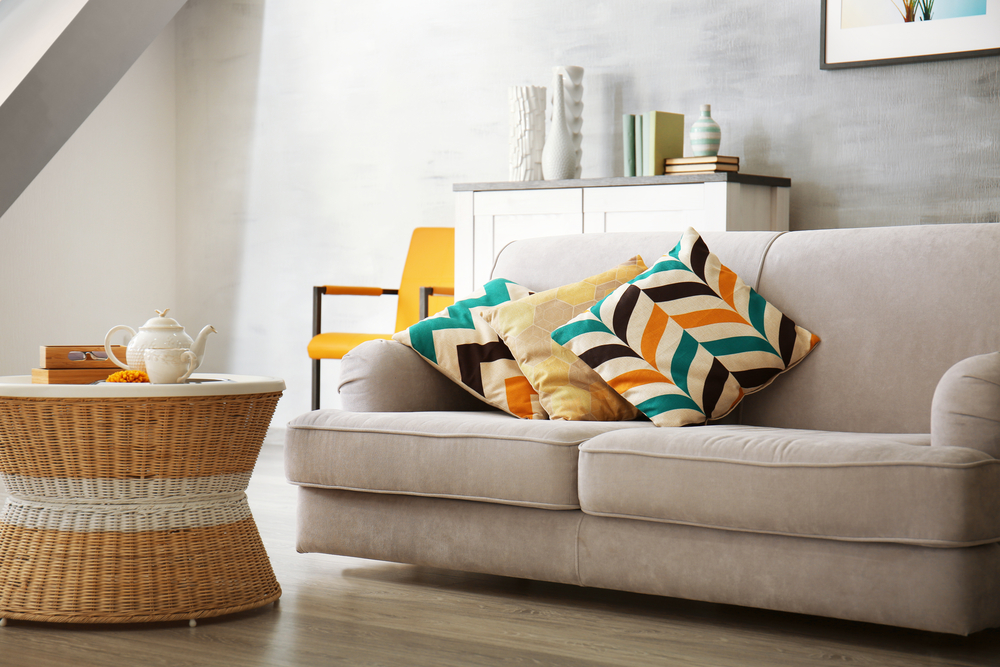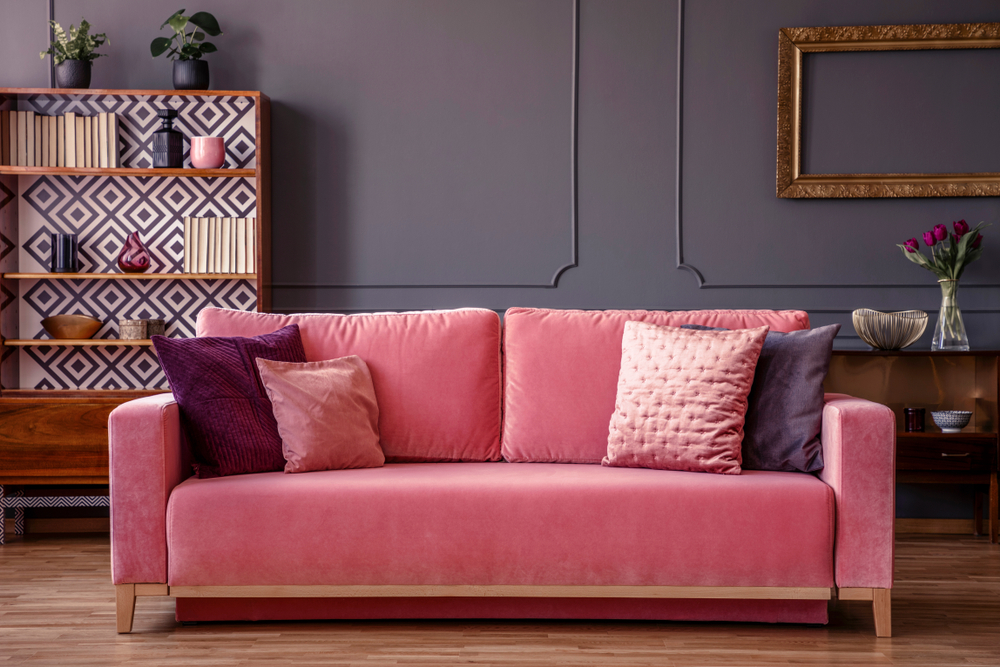Sofa Fillings to Make it More Comfortable

One of the requirements that a sofa must have is to be comfortable, which is why it’s important to understand sofa fillings. The filling you choose will depend on the main purpose of your sofa and whether you use it for a good nap, reading, having coffee, or for afternoon chats with friends.
Today, we’ll tell you all about the different types of sofa fillings that’ll enable you to make your sofa a comfortable and pleasant place that meets your needs.
Choosing the perfect sofa fillings
When it comes to offering comfort and durability, choosing the right sofa filling is essential. There are different types and we can get them in specialized stores or online. Buying a sofa is such a big purchase that it shouldn’t be taken lightly.
Although most models of sofas are filled with foam or feathers (or a mix), we can also find synthetic fiber fillings and other materials.
What types of sofa fillings exist?

You must bear in mind that the composition of your sofa, depends on how comfortable and resistant it’ll be. As such, pay attention to the available options.
1. Feathers
This is the most comfortable type of filling and also the most expensive. Feathers are perfect for backrests but they have the drawback that over time they become mishappen, lose volume, and must be replaced.
2. Foam
A common choice for those who don’t want to spend a fortune on a sofa. Foam rubber padding is quite durable but has the drawback of being somewhat hard and doesn’t mold to our shape when we sit.
3. Synthetic
In recent years, synthetic sofa fillings have become another option that offers more comfort. This is quite soft and even has anti-allergic properties. In addition, they don’t become misshapen and are waterproof. We’re talking about latex and soft fiber.

4. Hybrids
Using a combination of materials to fill your sofa is also another popular option. Sometimes known as a ‘sandwich’ because it has a layer of foam in the center and two layers of feathers or polyester. Thanks to this combination it doesn’t deteriorate as fast.
5. Memory foam
This type of foam is very innovative since it has the ability to adapt to the contours of our bodies and then return to the initial position when we get up. And in addition, it has the advantage of lasting for a long time, as long as it doesn’t have to support very heavy loads or for several hours in a row.

6. Silicone fiber
Another of the newer types of sofa fillings includes hollow silicone-coated polyester fiber. This material is very soft and allows quick recovery of the original shape.
It’s not recommended in hot environments since it immediately ‘copies’ the temperature of the body or the room.
7. Hypersoft
This padding is used according to the manufacturer of the sofa. Some fill the cushions with it and others use it as a surface layer next to another material. The hypersoft doesn’t deform, it’s very comfortable and has an excellent rebound.
Recommendations for choosing the best sofa fillings to suit your needs

Usually, sofas with feathers (both in the backrest and in the seat) must be refilled after a certain number of years in order to maintain comfort. Before buying, check that they’re goose feathers, which are better quality.
Moreover, if you use the sofa daily and spend several hours sitting on it, we recommend that you opt for one with seats that are made of high-density foam rubber and covered with hollow fiber. This way it’ll last longer.
If you choose a sofa filled only with foam rubber, you’ll have less comfort and more hardness. Also, it won’t adapt to your body when you sit. But maybe it’s a good idea for a reading seat or to avoid falling asleep while watching a movie.
Another recommendation if you opt for foam: make it high-density and, if you can, invest a little more money so that it includes a goose feather wrap. This will last much longer and be much more comfortable.
One of the requirements that a sofa must have is to be comfortable, which is why it’s important to understand sofa fillings. The filling you choose will depend on the main purpose of your sofa and whether you use it for a good nap, reading, having coffee, or for afternoon chats with friends.
Today, we’ll tell you all about the different types of sofa fillings that’ll enable you to make your sofa a comfortable and pleasant place that meets your needs.
Choosing the perfect sofa fillings
When it comes to offering comfort and durability, choosing the right sofa filling is essential. There are different types and we can get them in specialized stores or online. Buying a sofa is such a big purchase that it shouldn’t be taken lightly.
Although most models of sofas are filled with foam or feathers (or a mix), we can also find synthetic fiber fillings and other materials.
What types of sofa fillings exist?

You must bear in mind that the composition of your sofa, depends on how comfortable and resistant it’ll be. As such, pay attention to the available options.
1. Feathers
This is the most comfortable type of filling and also the most expensive. Feathers are perfect for backrests but they have the drawback that over time they become mishappen, lose volume, and must be replaced.
2. Foam
A common choice for those who don’t want to spend a fortune on a sofa. Foam rubber padding is quite durable but has the drawback of being somewhat hard and doesn’t mold to our shape when we sit.
3. Synthetic
In recent years, synthetic sofa fillings have become another option that offers more comfort. This is quite soft and even has anti-allergic properties. In addition, they don’t become misshapen and are waterproof. We’re talking about latex and soft fiber.

4. Hybrids
Using a combination of materials to fill your sofa is also another popular option. Sometimes known as a ‘sandwich’ because it has a layer of foam in the center and two layers of feathers or polyester. Thanks to this combination it doesn’t deteriorate as fast.
5. Memory foam
This type of foam is very innovative since it has the ability to adapt to the contours of our bodies and then return to the initial position when we get up. And in addition, it has the advantage of lasting for a long time, as long as it doesn’t have to support very heavy loads or for several hours in a row.

6. Silicone fiber
Another of the newer types of sofa fillings includes hollow silicone-coated polyester fiber. This material is very soft and allows quick recovery of the original shape.
It’s not recommended in hot environments since it immediately ‘copies’ the temperature of the body or the room.
7. Hypersoft
This padding is used according to the manufacturer of the sofa. Some fill the cushions with it and others use it as a surface layer next to another material. The hypersoft doesn’t deform, it’s very comfortable and has an excellent rebound.
Recommendations for choosing the best sofa fillings to suit your needs

Usually, sofas with feathers (both in the backrest and in the seat) must be refilled after a certain number of years in order to maintain comfort. Before buying, check that they’re goose feathers, which are better quality.
Moreover, if you use the sofa daily and spend several hours sitting on it, we recommend that you opt for one with seats that are made of high-density foam rubber and covered with hollow fiber. This way it’ll last longer.
If you choose a sofa filled only with foam rubber, you’ll have less comfort and more hardness. Also, it won’t adapt to your body when you sit. But maybe it’s a good idea for a reading seat or to avoid falling asleep while watching a movie.
Another recommendation if you opt for foam: make it high-density and, if you can, invest a little more money so that it includes a goose feather wrap. This will last much longer and be much more comfortable.
All cited sources were thoroughly reviewed by our team to ensure their quality, reliability, currency, and validity. The bibliography of this article was considered reliable and of academic or scientific accuracy.
Coello, N., Bernal, C., Bertsch, A., Estrada, O., Moccó, Y., & Hasegawa, M. (2003). Las plumas como residuo agroindustrial: Su utilización biotecnológica para producir insumos de interés industrial. Revista de La Facultad de Ingenieria.







